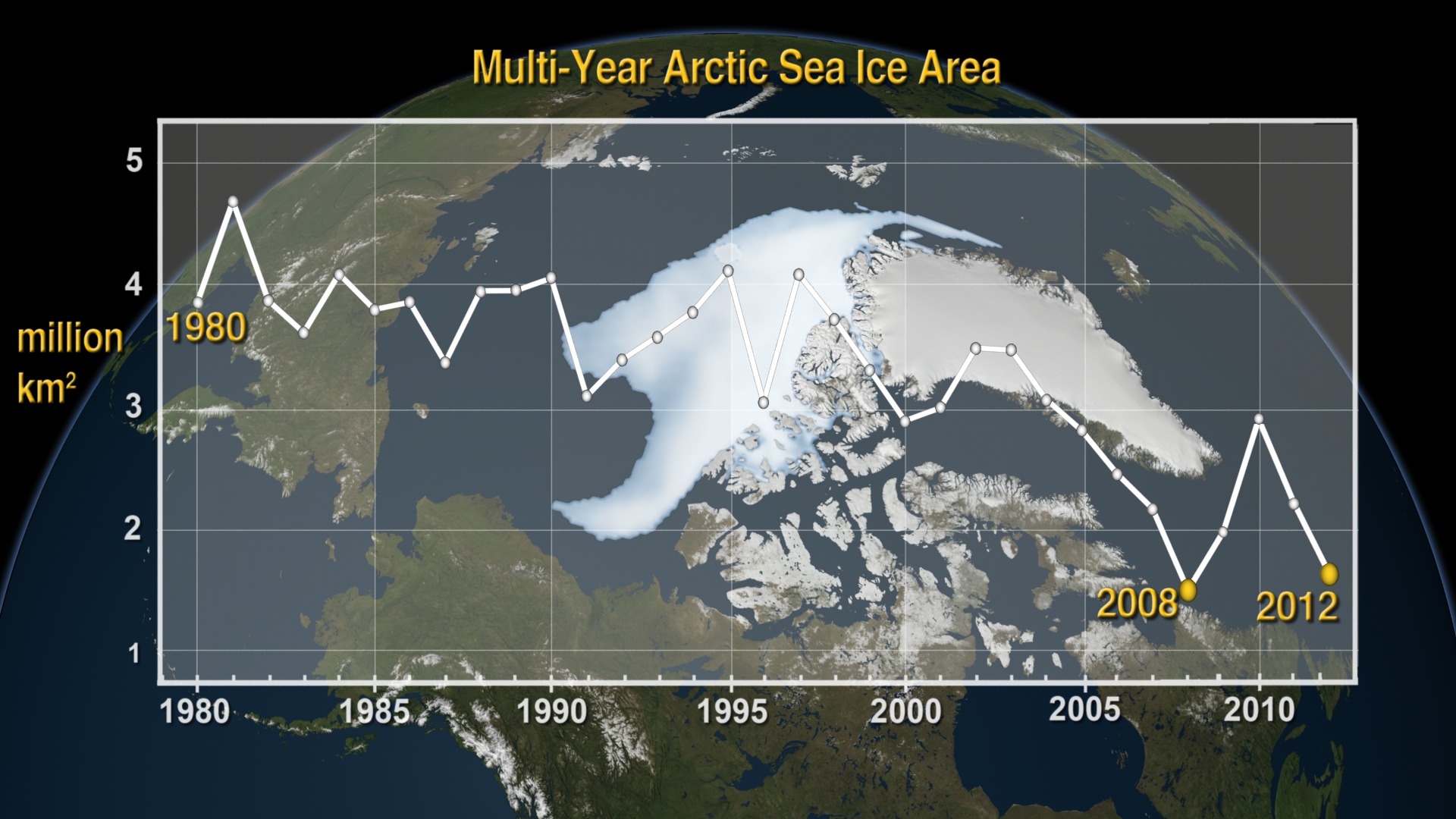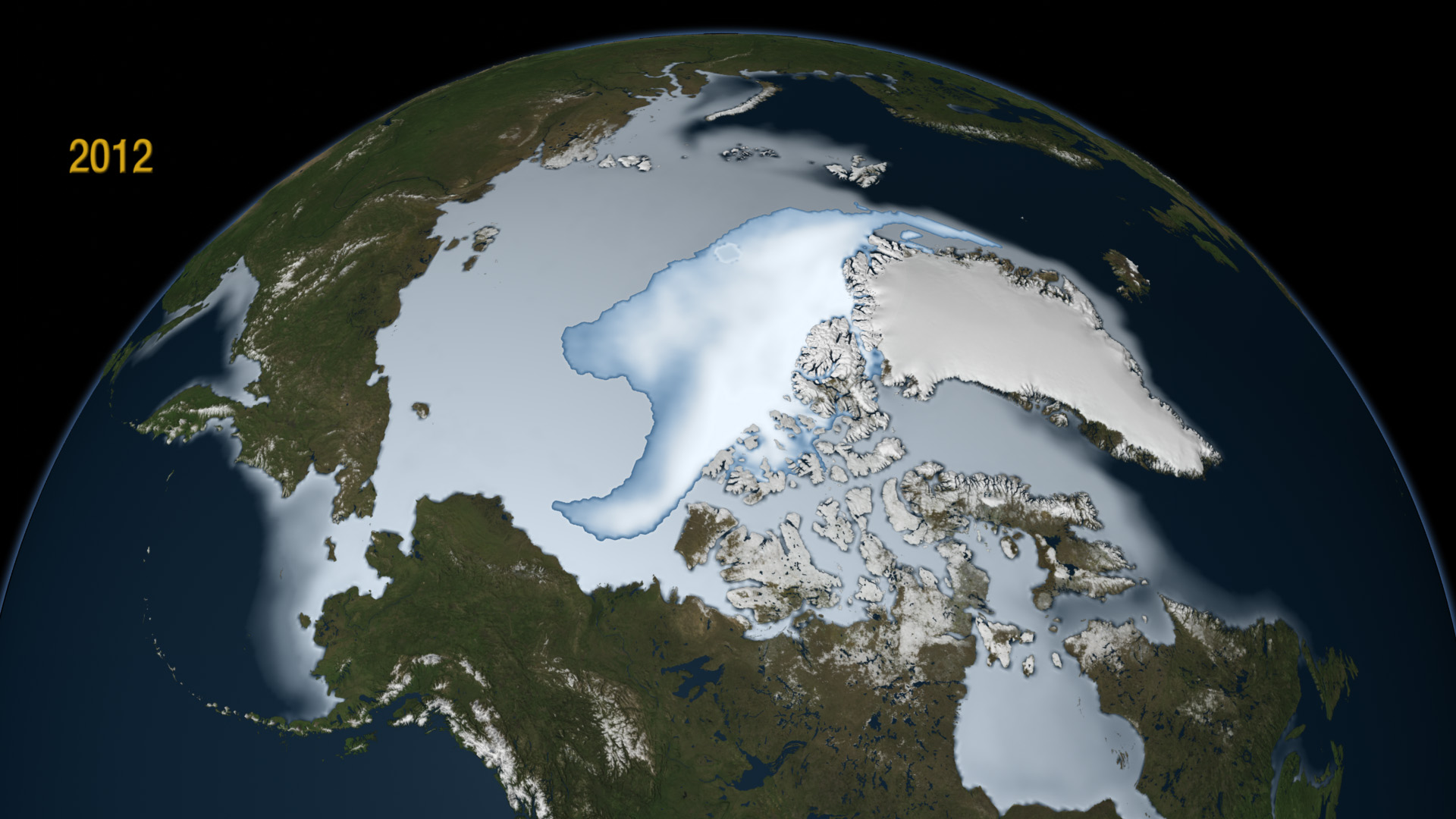The Long Thaw
As sea ice in the Arctic swells in winter and shrinks in summer, it gets pushed and pulled by winds, dynamic ocean currents and changing temperatures that continually morph its shape and size. But when scientists observe the Arctic on a longer time scale, the floating, frozen landscape in flux reveals a clear trend: The oldest and thickest sea ice in the Arctic is disappearing even faster than younger and thinner ice at the fringe of the polar ice cap. According to a new NASA study, the total area covered by hardened Arctic sea ice that has survived multiple summers is now declining at a rate of 17.2 percent per decade. What was once a sizable circular mass on top of the planet now looks more like a diminishing crescent, clinging to the coastline of Greenland and northern Canada. Watch the visualization below to witness how the Arctic's thickest sea ice has declined from 1980 to 2012.

The vast frozen cap that covers the Arctic Ocean crackles with the energy of a continent-sized slab of ice in constant motion.
This video details the three-decade decline of the Arctic's thick, older sea ice, with seasonal ice not shown and gray circles marking data gaps.

Microwave sensors on satellites can detect ice thickness. Satellites saw a downward spike in older, thicker sea ice in 1991.

Again about a decade later, the Arctic's oldest, thickest sea ice shriveled to a new record minimum.

Scientists were stunned in 2008, when the area of older, thicker sea ice area reduced to 55 percent of its average since the late 1970s.

The area covered by older and thicker sea ice in the Arctic diminished by almost 50 percent between 1980 and 2012.
For More Information
See NASA.gov
Credits
Please give credit for this item to:
NASA's Goddard Space Flight Center
-
Animators
- Cindy Starr (Global Science and Technology, Inc.)
- Lori Perkins (NASA/GSFC)
- Greg Shirah (NASA/GSFC)
-
Narrator
- Patrick Lynch (Wyle Information Systems)
-
Producers
- Kayvon Sharghi (USRA)
- Jefferson Beck (USRA)
-
Scientist
- Josefino Comiso (NASA/GSFC)
-
Project support
- James W. Williams (Global Science and Technology, Inc.)
-
Writer
- Patrick Lynch (Wyle Information Systems)
Release date
This page was originally published on Tuesday, March 6, 2012.
This page was last updated on Wednesday, May 3, 2023 at 1:53 PM EDT.

